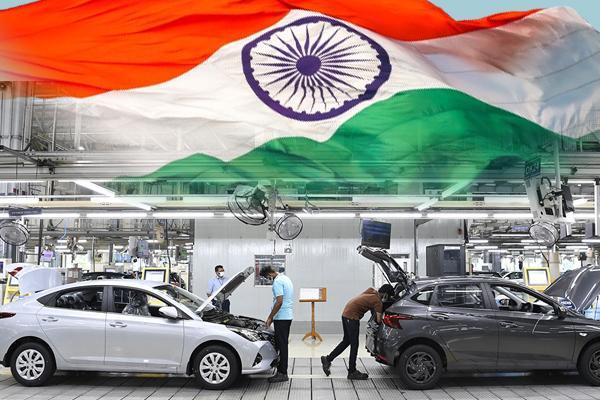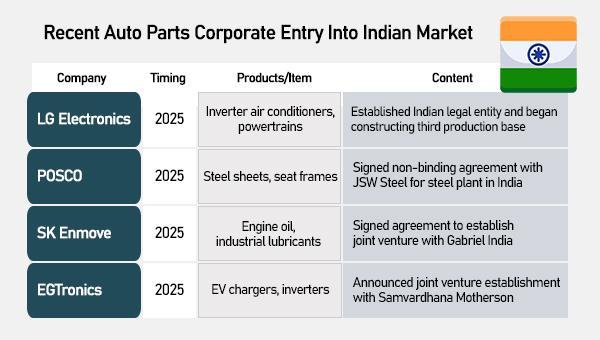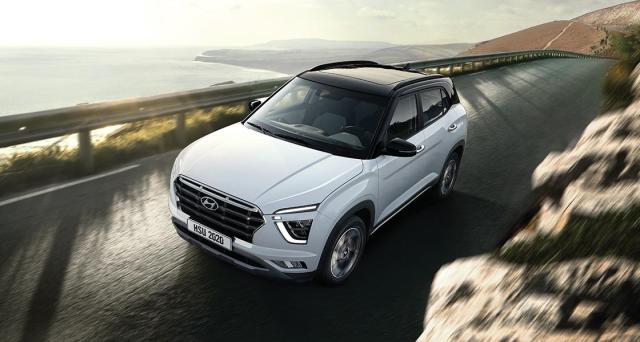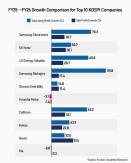
"India is a strategic priority in Hyundai's global growth vision. India isn't just important to Hyundai's global strategy — India is Hyundai's global strategy," said Jose Munoz, president of Hyundai Motor, at the 2025 CEO Investor Day held in Mumbai last week.
The inclusion of Mumbai in the company's first overseas investor roadshow this year underscores its new focus. Munoz announced that Hyundai plans to invest about 7.2 trillion won — roughly $5 billion — over the next five years, matching its cumulative investment in India over the past three decades. The group plans to introduce 26 new models, including its first hybrid vehicle designed specifically for Indian road and lifestyle conditions, as well as premium models under the Genesis brand.
The "India pivot" strategy comes as the world's two largest auto markets, the United States and China, grow increasingly protectionist with contrasting tariff regimes and local subsidy incentives.
India, meanwhile, has taken a different course — slashing its goods and services tax (GST) in September to cushion potential shocks from the 50 percent U.S. tariffs. Consumption taxes on small cars were cut from 29 percent to 18 percent, and on large vehicles, including SUVs, from 50 percent to 40 percent.

Beyond policy incentives, India's vast population of 1.4 billion and low vehicle ownership rate — just 7.5 percent — make it a "blue ocean" for global automakers. The country now ranks third worldwide in vehicle sales behind China and the U.S., with its electric and hybrid markets expanding rapidly. The government's latest GST 2.0 reforms, which further trimmed small-car taxes by up to 13 percent, are expected to boost consumption even more.
India's appeal also lies in its manufacturing competitiveness. According to the International Monetary Fund, India's per capita GDP stood at $2,396 last year — less than one-fifth of China's $13,306 — while its median age of 29.8 years makes it one of the youngest major economies. In contrast, Japan's median age is 49.9, South Korea's 45.5, China's 40.2, and the U.S.'s 38.9. This youthful demographic provides both abundant labor and long-term consumer potential.
"Hyundai initially found success in India with compact cars — affordable pricing and reliable after-sales service built strong brand trust," said Lee Soon-cheul, professor at the Department of Indian Studies at Busan University of Foreign Studies. "As India's per capita income rises, car demand will expand further, particularly since public transport infrastructure remains underdeveloped and roads poorly maintained."
Hyundai Motor India (HMI), which went public last year in India's largest IPO to date, boasts a net profit margin of 8 to 9 percent — the highest among Hyundai's overseas operations. In September, HMI sold 70,347 vehicles, up 10 percent from a year earlier. SUV sales reached a record 37,313 units, accounting for 72.4 percent of domestic sales, while exports of 18,800 units marked a 33-month high.
Sister brand Kia India posted 22,700 sales during the same period, up 15.8 percent. Both Hyundai and Kia are projected to achieve record annual sales in India this year.
Production capacity is expanding in step with sales. Hyundai, which currently operates two plants in Chennai, will open a new facility next year in the western city of Pune, adding 250,000 units of annual capacity and pushing its total Indian output above one million vehicles. Industry analysts expect Hyundai's local production to rival that of Maruti Suzuki and Tata Motors.
In January, the company appointed Tarun Garg as the first Indian chief executive of HMI in its 29-year history — a move credited with sustaining record sales and overseeing the successful IPO.
But bumpy roads lie ahead.

"Hyundai will also need to navigate shifting environmental regulations, high tax rates, protectionist trade policies, and legal uncertainties in India," Kim added.
Despite its rapid growth, India's modest GDP per capita, wide income disparity, and uneven consumer spending continue to limit purchasing power. Industry observers estimate that only about 280 million of India's 1.4 billion people earn more than $10,000 a year — a reminder that while the Indian market is vast, it is far from uniformly affluent.
Still, with narrowing options as the U.S. and China turn increasingly inward, Hyundai Motor's best bet for mid-term growth may rest on India’s demographic vitality and reform-driven momentum — a gamble that could define the next chapter of its global expansion.
Copyright ⓒ Aju Press All rights reserved.




